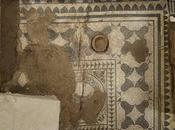
All'epoca delle nostre nonne, e forse ancor prima, esso serviva a proteggere il vestito che copriva, perché un tempo gli abiti erano pochi e bisognava conservarli lindi ed in ordine il più possibile, era necessaria poca stoffa per cucirne uno - spesso era fatto con ritagli di vecchi abiti lisi e consunti - e si lavava ed asciugava con più facilità rispetto ad un abito;
 in cucina era utile come presina, per togliere le teglie dal forno e per mantenere la gonna asciutta lavorando vicino all'acquaio.
in cucina era utile come presina, per togliere le teglie dal forno e per mantenere la gonna asciutta lavorando vicino all'acquaio.
Ma a questi quanti altri utilizzi si sono col tempo aggiunti e quanti ricordi ciascuno di noi ha di sicuro almeno ad un grembiule legati ...
 Le nostre nonne ci correvano incontro per asciugare amorevolmente con esso le nostre lacrime quando ci sentivano piangere magari perché eravamo caduti a terra e nelle sue pieghe vidi spesso trovar riparo ai volti e agli sguardi dei fanciulli più timorosi e timidi;
Le nostre nonne ci correvano incontro per asciugare amorevolmente con esso le nostre lacrime quando ci sentivano piangere magari perché eravamo caduti a terra e nelle sue pieghe vidi spesso trovar riparo ai volti e agli sguardi dei fanciulli più timorosi e timidi; 
in occasione degli ultimi preparativi prima che in casa giungesse qualche ospite veniva velocemente fatto scorrere sui mobili scuri passati a cera per togliere gli ultimi, invisibili granellini di polvere che non potevano convivere con noi !

La cara, compianta Signora Angela, padrona della casa in cui trascorrevamo le vacanze estive quando ero bambina e ragazzina, a cui ero molto legata ed il cui ricordo mi accompagna ogni giorno, usciva dal pollaio con il grembiule colmo di uova calde da portare in casa, e talvolta, vicino il trogolo a cui lavava i panni, lo utilizzava per asciugarvisi le braccia, bagnate fino ai gomiti, mentre vi veniva incontro per salutarvi con il suo amabile sorriso; era facile vederla chiudere il cancellino dell'orto tenendo i lembi di un vecchio grembiule sporco di terra e colmo di ogni tipo di verdure oppure vederla sgranare piselli o fagioli seduta sui gradini di casa, ed allora il grembiule ne raccoglieva le cotiche. Ricordo infine di aver spesso visto sventolare il suo grembiule per enfatizzare qualche frase di cui, ahimè, non ho memoria, e di sicuro sulla porta di casa per chiamare d'estate gli uomini dal lavoro all'ora di pranzo, ben cinque ne aveva in famiglia !
 In autunno spesso il grembiule, la sera, sulla strada di casa, si colmava di mele o pere raccolte dai prati perché cadute dagli alberi e, quando si cominciava con l'accendere la stufa, esso serviva per trasportare i pezzi più piccoli di legna e per proteggere le mani quando si impugnava la maniglia incandescente dello sportello del focolaio; era facile, un tempo, vedere i grembiuli ad asciugare sopra le care vecchie stufe a legna prima di andare a letto, sventolare lievemente mossi dal calore che dalla piastra di ghisa esalava, quasi salutassero la fine del giorno con una umile danza, e quando faceva molto freddo, nei pomeriggi d'inverno, spesso le nostre nonne, rabbrividendo, vi si avvolgevano le braccia per proteggerle dal gelo.
In autunno spesso il grembiule, la sera, sulla strada di casa, si colmava di mele o pere raccolte dai prati perché cadute dagli alberi e, quando si cominciava con l'accendere la stufa, esso serviva per trasportare i pezzi più piccoli di legna e per proteggere le mani quando si impugnava la maniglia incandescente dello sportello del focolaio; era facile, un tempo, vedere i grembiuli ad asciugare sopra le care vecchie stufe a legna prima di andare a letto, sventolare lievemente mossi dal calore che dalla piastra di ghisa esalava, quasi salutassero la fine del giorno con una umile danza, e quando faceva molto freddo, nei pomeriggi d'inverno, spesso le nostre nonne, rabbrividendo, vi si avvolgevano le braccia per proteggerle dal gelo.Avendo la fortuna di aver trascorso molto tempo della mia infanzia con i miei cari nonni e, con loro, molto spesso in campagna, dove antiche tradizioni stentano a svanire, ho avuto la possibilità di vivere personalmente le scene di cui vi ho fatto menzione e di apprezzare, perciò, molto questo 'accessorio' femminile e credo con questo, infine, di poter dire che nessun'altro indumento femminile abbia un tale valore affettivo e suppongo che debba trascorrere ancora molto tempo prima che un'altro lo possa, in tale significazione, sostituire.
Vi ringrazio come sempre per aver letto ciò che con tanta passione scrivo su queste pagine e vi saluto con tanto amore e gratitudine.
A presto ♥



Grandmother's aprons ~ How many memories linked to an apron ...
I do not think, and I say it with a hint of regret, that the children of today know what in effect an apron is and such multiple uses of it in the past they did, promoting in this way it as one of the richest garments of meaning, especially emotional, of the whole women's clothing.
- picture 1
At the time of our grandmothers, and perhaps even before, it was used to protect the dress that covered, because once the clothes were very few and had to keep neat and tidy as much as possible, it was necessary a little piece of fabric to sew one - often it was done with scraps of old clothes threadbare and worn - and was washed and dried more easily than a dress;
- picture 2
in the kitchen was useful as a pot holder to remove the pans from the oven and keep the skirt dry working near the sink.
- picture 3
But how many other uses were added to these over time and how many memories each of us has, for sure, at least to an apron tied ...
- picture 4
Our grandmothers rushed us toward us to dry lovingly with it our tears when crying, maybe because we had fallen to the ground, and how many times I saw the faces and the looks of the children more fearful and timid finding shelter in its folds;
- picture 5
on the occasion of the final preparations before the arrival of some guest it was quickly used to wipe down the dark waxed furniture to remove the last, invisible, dust motes that they couldn't live with us !
- picture 6
The dear, lamented Mrs. Angela, hostess of the house where we spent the summer holidays when I was a child and a young girl, whom I was very much tied to, whose memory accompanies me every day, came out of the chicken coop with her apron full of hot eggs to take home, and sometimes, near the trough where she washed the clothes, she used it to dry fastly her arms, wet up to her elbows, while she was running toward you to greet you with her pleasant and joyful smile; it was easy to see her close the gate of her garden keeping the edges of an old apron, dirty of ground and filled with all sorts of vegetables and sometimes you could see her sitting on the steps of her old house shelling peas or beans, and then her apron was useful to contain their rinds. Finally, I remember that I had often seen her waving her apron to emphasize a few sentences of which, alas, I have no memory, and certainly on the doorstep to call on summer the family men at lunchtime after a morning of hard work, she had five of them in her house !
- picture 7 on the left - In autumn often the apron in the evening, on the way back home, was filled with apples or pears picked up from the meadows because fell down from the trees, and when they began with lighting the stove, it was used to transport the smaller pieces of wood and to protect your hands when you gripped the handle of the glowing door of the fireplace; it was easy, once, to see aprons hanging to dry above the dear old wood stoves before going to bed, waving slightly, moved by the warmth that the cast iron plate radiated, almost if they wanted to greet the end of each day with a humble dance, and when it was very cold, in the winter afternoons, often our grandmothers, shivering, in their apron wrapped their arms to protect them from frost.
Having the good fortune to have spent much of my childhood with my beloved grandparents and, with them, very often, in the countryside, where ancient traditions are struggling to fade, I had the opportunity to experience personally the scenes which I made mention of and appreciate, therefore, this feminine item of clothing; I think with this, finally, to be able and say that no other female garment has such sentimental value and I suppose that it must still flow a lot of time before another could, in this signification, replace it.
Thank you, as always, for reading what I write with such passion on these pages of mine and let me greet you with so much love and gratitude.
See you soon ♥









